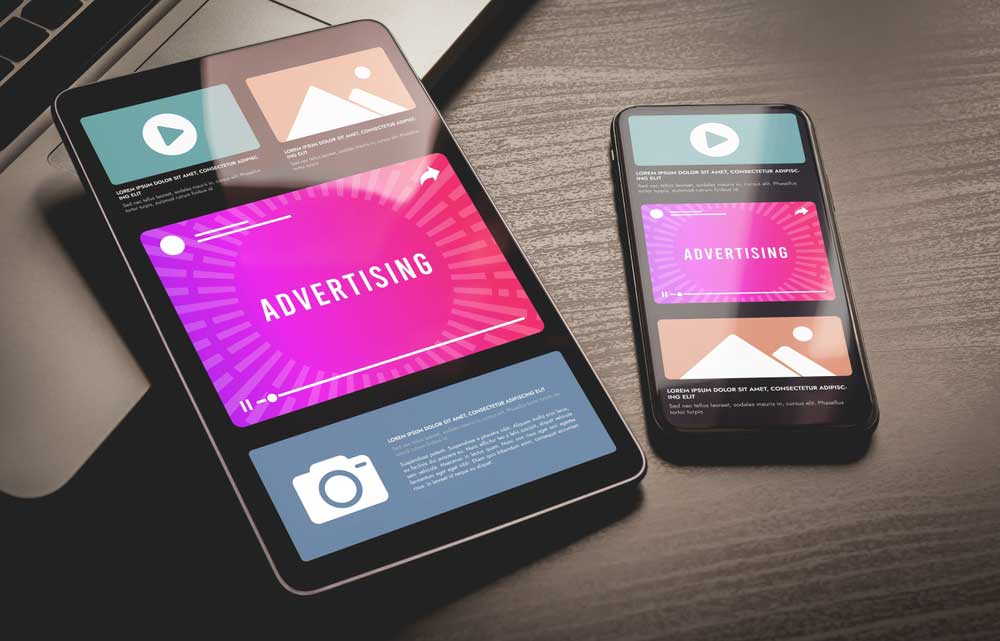Missouri Marketing Resource Blog

Targeted Display 101: What It Is And How It Works

In the ever-evolving landscape of marketing, digital advertising stands out as a powerful tool for reaching target audiences effectively. Among the various strategies, targeted display advertising has gained prominence as businesses seek to optimize their advertising investments. This blog post delves into the intricacies of targeted display advertising, explaining its essence, the mechanics behind it, and the transformative impact it can have on your business.
Targeted display advertising is a dynamic form of online promotion where ads are strategically placed on websites or digital platforms, ensuring exposure to an audience most likely to be interested in your offerings. This precision is achieved through leveraging data and technology, enabling advertisers to sift through vast amounts of information to precisely pinpoint their target audience.
How Targeted Display Advertising Works
Targeted display advertising operates on the principle of relevant audience targeting. The process begins with the collection of user data from various sources such as website cookies, browsing history, social media activity, and more. This data is then analyzed to create detailed user profiles, categorizing individuals based on attributes like age, location, interests, online behavior, and shopping habits.
These profiles serve as a basis for audience segmentation, grouping similar user profiles together. Advertisers can then select the segments that closely align with their target audience. Once these segments are selected, targeted display ads are served to those specific audience segments when they browse online, ensuring an optimal match between the viewer's profile and the ad content. Such a focused approach not only increases the likelihood of user engagement but also maximizes return on ad spend.
In a nutshell, suppose you own a sports equipment store and want to promote your latest range of hiking gear. With targeted display advertising, you'd leverage collected data, such as users that frequently visit hiking or outdoor activity websites, have searched for hiking gear recently, or are members of online hiking groups. The system then creates a segment of these ‘hiker’ profiles. When these users browse the internet, your ad for hiking gear would be displayed on the websites they visit, effortlessly connecting your products with those most likely to be interested in them. This precise targeting is the power of targeted display advertising.
The Process of Targeted Display Advertising
Before diving into the nuts and bolts of targeted display advertising, it's pivotal to understand the role your digital marketing partner plays in this process. They will not only guide you through this complex landscape but also act as the expert navigator steering the advertising ship toward your desired audience. After meticulous discussions and in-depth examination of your target audience's characteristics, your digital marketing partner devises a comprehensive strategy. This strategy is hinged on a process that distills the essence of targeted display advertising, ensuring your business reaches the right people, at the right time, in the most effective way. Let's uncover this process.
Step 1: Audience Definition
The journey begins with defining your target audience based on factors like geographic location, demographics, interests, and behaviors.
Step 2: Platform Identification
After audience definition, identifying the platforms frequented by your customer base is crucial to ensure your ads appear on relevant websites.
Step 3: Ad Creation
Various ad formats, including banners, videos, and audio, can be employed to create visually appealing content tailored to your audience.
Step 4: Bidding
Ad placement involves a bidding process on digital ad exchanges, allowing real-time competition for ad spots that target a specific audience.
Step 5: Monitoring and Adjusting
Consistent monitoring of campaign data, in alignment with your campaign goals, provides crucial data that informs any campaign adjustments that are needed.
The Power of Targeted Display Advertising
Targeted display advertising plays a crucial role in a comprehensive marketing campaign. It enables businesses to reach out to buyers at various stages of the buying funnel, from awareness to consideration and ultimately conversion. By leveraging targeted display ads, businesses can effectively deliver tailored messages to specific audiences, increasing the chances of driving engagement, leads, and sales. Targeted display is especially useful for:
1. Enhanced Brand Awareness
Targeted display advertising proves instrumental in elevating brand visibility and efficiently reaching your desired audience. The use of target audience data ensures your message resonates with individuals genuinely interested in your product or service, increasing the likelihood of meaningful engagement.2. Driving Website Traffic
Strategically placed ads can channel potential customers to your website, significantly enhancing the probability of converting visitors into customers. Moreover, the increased traffic can positively impact your website's search engine ranking, providing added benefits for SEO purposes.
Data shows that targeted display ads can yield impressive results. They have been proven to increase brand visibility and awareness, driving higher click-through rates and conversions compared to non-targeted ads. Additionally, the ability to track and measure the performance of targeted display ads allows businesses to optimize their campaigns and achieve better ROI.
In a landscape where maximizing ad spend is paramount, targeted display advertising emerges as an invaluable tool. Harnessing the capabilities of advanced data and technology allows businesses to create ads that are not only efficient but also highly effective. Whether the goal is to boost brand awareness, drive website traffic, or generate leads, targeted display advertising proves to be a versatile solution. Armed with a foundational understanding of its mechanics, businesses can embark on a journey to leverage the myriad of benefits that targeted display advertising has to offer.



